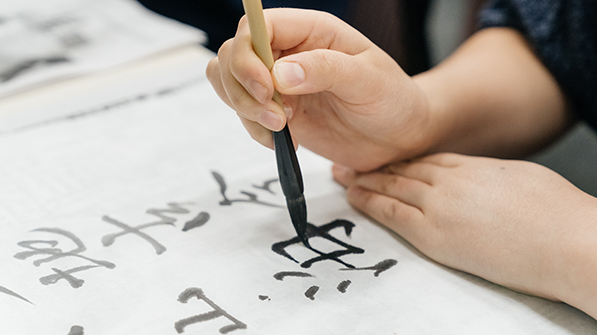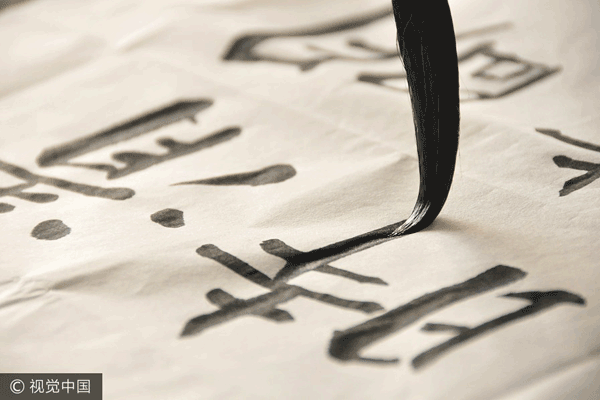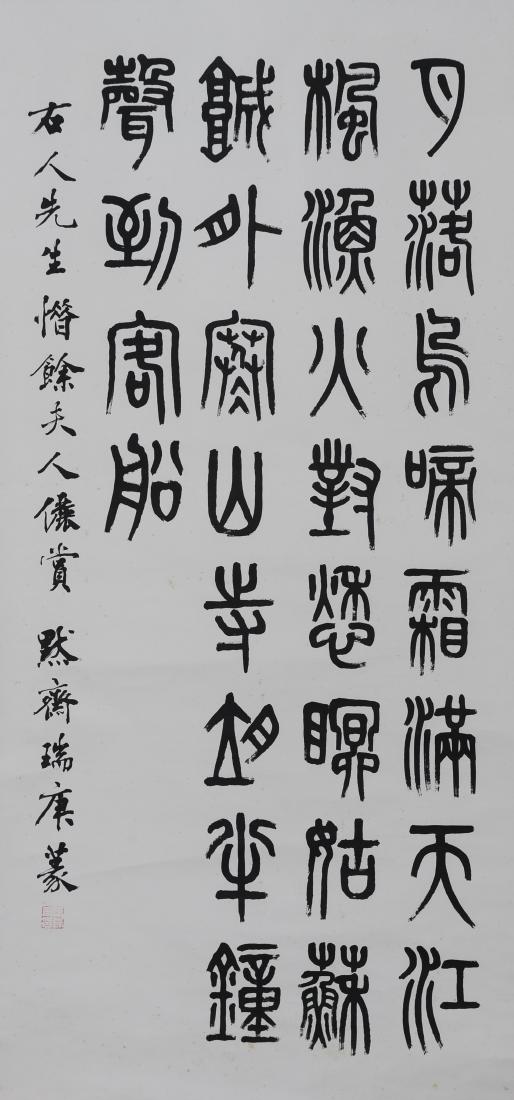Chinese Calligraphy
4 min readWriting Medium
The”writing”of Chinese characters first requires a medium.As today’s writings are mostly on paper,one may wonder:What came before that?
In the shang Dynasty,characters were carved on oracle bones or bronze wares.The Spring and Autumn Period was a time when the amount of writings and characters increased in great number.Hence new mediums emerged.Before paper was invented,bamboo and wood slips were important writing mediums while silk was used by aristocrats for writing.

Writing Instruments
Knives were first used as carving tools in the early phases of Chinese script.With the emergence of other specialized tools like brushes,knives began to serve as“erasers”-to scratch off writing mistakes.
Among the various calligraphic tools,the writing brush is special to China.It represents one of the four treasures of the study,which also include paper,ink and ink stone.A writing brush comprises two parts:the head and shaft.The head is made of goat,wolf,rat or rabbit hair,which is softer than a quill pencil,or ballpoint pen.The shaft can be made of bamboo,wood and porcelain,as well as some precious materials such as ivory and jade.
“Four treasures of the study”are the key instruments for writing Chinese characters.
When the inkstone is filled with water,it is used as a base to grind solid ink sticks into liquid ink.Inkstones are usually made of stone or bricks.As the brush hair is made of soft animal fur,this instrument is very flexible and adaptive in writing.
The Chinese writing brush boasts a long history.According to the Records of the History,the brush was invented by Meng Tian(-210 B.C.),a general under the First Emperor of the QinDynasty,using rabbit hair.Therefore,Meng Tian has been regarded as the father of the writing brush.However,primitive painted pottery unearthed in Yangshao,Henan Province,contains decorative designs painted by tools resembling a brush.Clearly visible stains or brush marks remain in certain places on the pottery.This evidence suggests that the brush may have predated written language itself.
Brushes became the major writing instrument of Chinese characters in the Spring and Autumn period.Among the cultural relics unearthed in Zuojiagong Mountain of Changsha,
Hunan Province in 19 54 were different kinds of ancient writing brushes and relics related to writing. This is the first time that our imagination of the writing brushes before the Han Dynasty got proved.

Knife-carved Scripts: Seal Cutting
Seal cutting is, in other words,”writing”with knives on materials like stone, wood and metal. It is a traditional graphic, calligraphic and engraving art of China. Before the invention of paper, official documents were written on bamboo or wooden slips and sealed with clay.A lettered seal was then stamped on the clay envelope.
Before the Ming Dynasty, seals were generally made for practical uses such as identification. Since the Ming Dynasty, calligraphers and painters have begun to treat seals as artistic creations. Through deliberate choice of material and application of cutting and arranging, the inch-long seals became genuine art of interest.
The Art of Writing: Chinese Calligraphy
Chinese calligraphy is an art of self-cultivation and self-expression. It reflects the mindset and mood of the writer, and fully embodies the unique beauty of Chinese script. Today, Chinese calligraphy is enjoyed by people throughout the world. There are five writing styles of Chinese calligraphy:①Xiaozhuan(Lesser Seal)-with standardized shape, strokes and structure, this script established the basic formation for all Chinese characters created since;② Clerical script-simpler and more regular in shape, it established the basic structure of most Chinese characters;③ Standard script-evolved from Clerical script, it is straight in line, square in shape, and easy to write;④ Caoshu script-an easy-to-write form for greater efficiency; and⑤ Xingshu script-a simple and smooth script between Standard script and Caoshu script.
Chinese calligraphy dates from the earliest day in history, and has been widely practiced throughout China to the present day. Different from paintings, Chinese calligraphy uses Chinese characters as its vehicles of expression to communicate the spiritual world of the artist. One does not have to know Chinese to appreciate its beauty since calligraphy, in essence, is an abstract art. It is so abstract and sublime that in Chinese culture it is universally regarded to be the most enlightening art form.
Just as one person’s appearance differs from others, so one person’s handwriting differs from the others’. Through its unique word structures, writing styles and way of handling the brush, calligraphy, as work of art, conveys the moral integrity, character, emotions, esthetic feelings and culture of the artist to readers and charms them with appealing beauty. Soit is believed among a lot of people that we can tell a person’s character through his or her handwriting.
Chinese characters evolved from pictures and signs, and Chinese art of calligraphy developed naturally from its unique writing system. Great calligraphers developed representative calligraphic styles of their times through the ages. The love of calligraphy is deeply ingrained in Chinese scholars and has been handed down to the present day.
Just like Chinese qigong, the Chinese brush calligraphy can temper a person into a state in which one can apply intuition got from the daily practice to control the concentration of inkand the size of each stoke or word. Calligraphy is considered an active way of keeping oneself fit and healthy, for the practice is relaxing and self-entertaining. Historically, many calligraphers were well known for their longevity.
The modernization of writing tools has given rise to many types of calligraphy other thanthe traditional brush-writings. Some contemporary western artists also assimilated Chinese calligraphy into abstract art, yielding many excellent works. Today, Chinese calligraphy is still considered an elegant art form even in neighboring countries. As Chinese culture spread to Japan, Korea, Singapore and Vietnam, calligraphy has become a unique feature of Oriental art.









